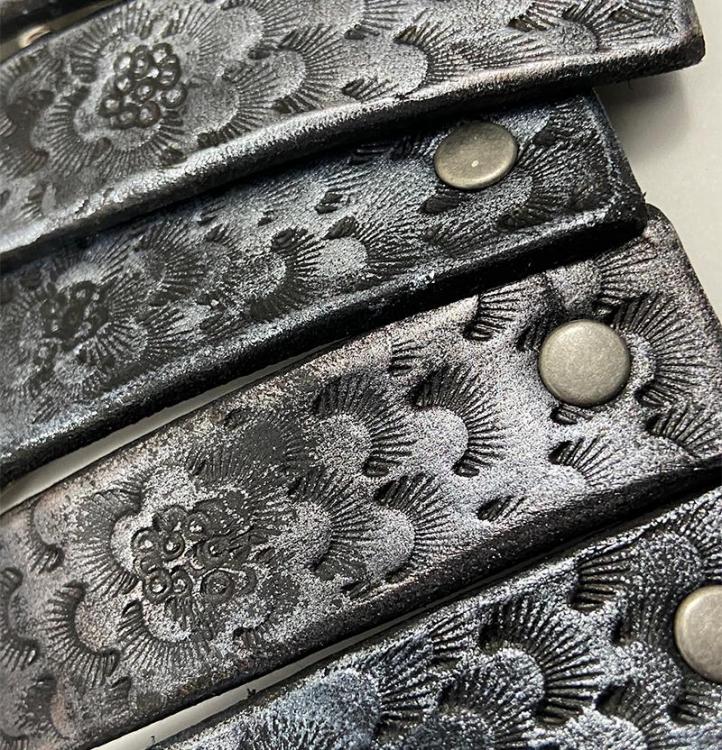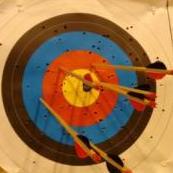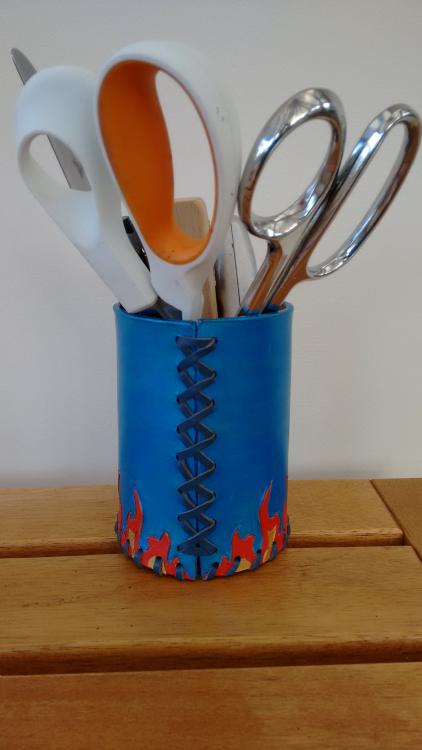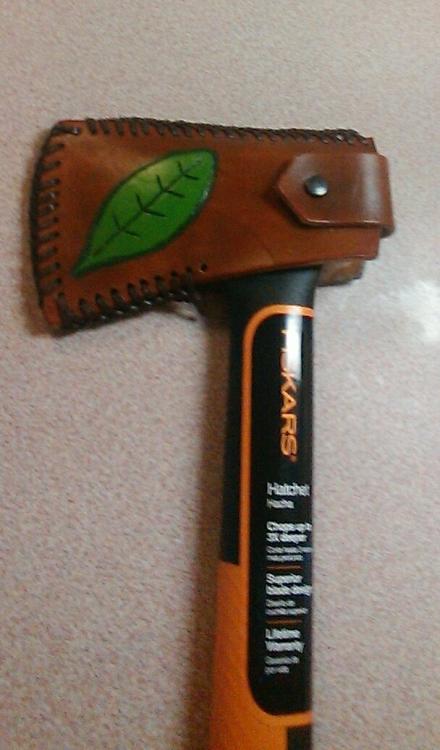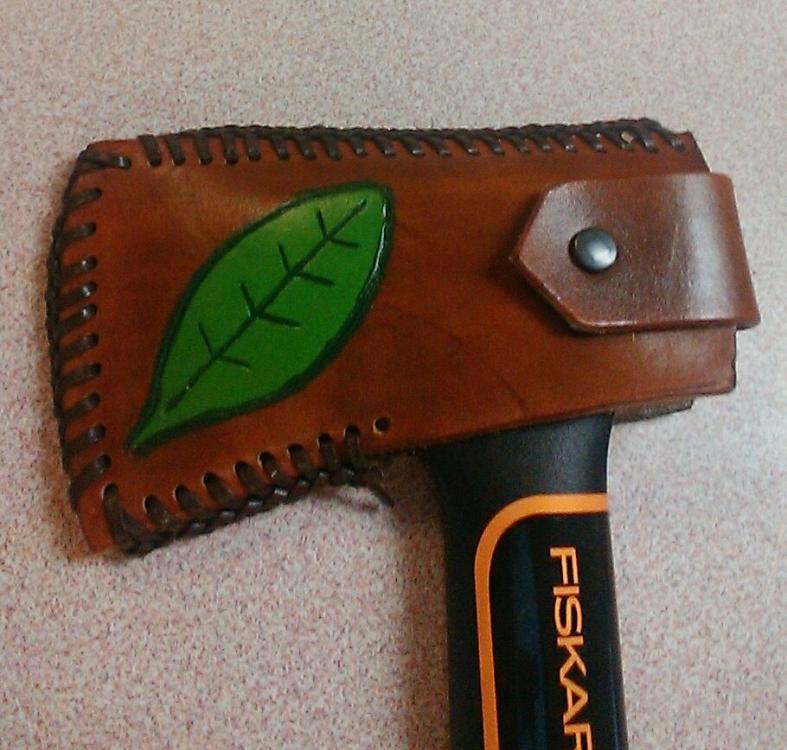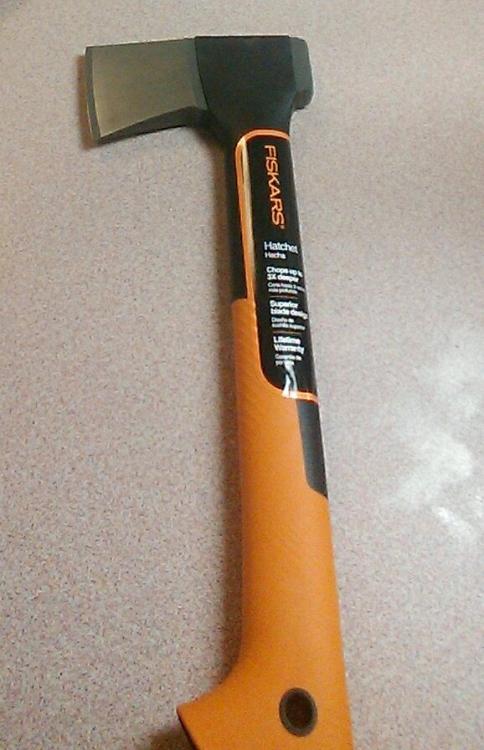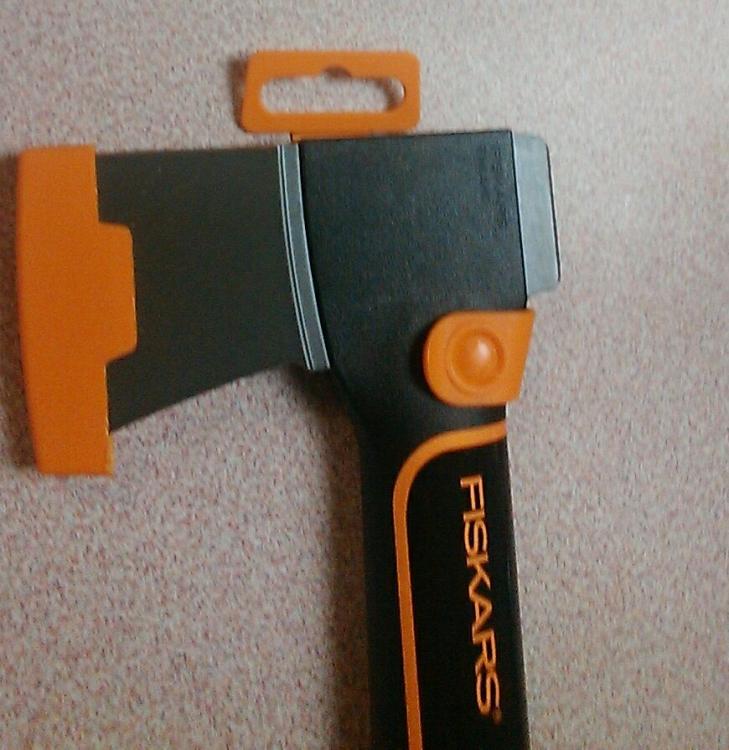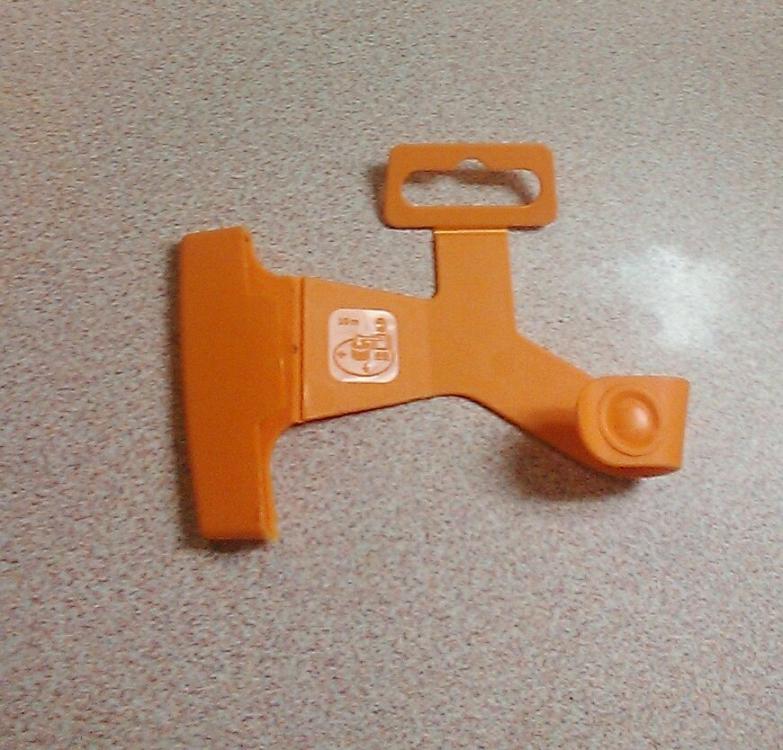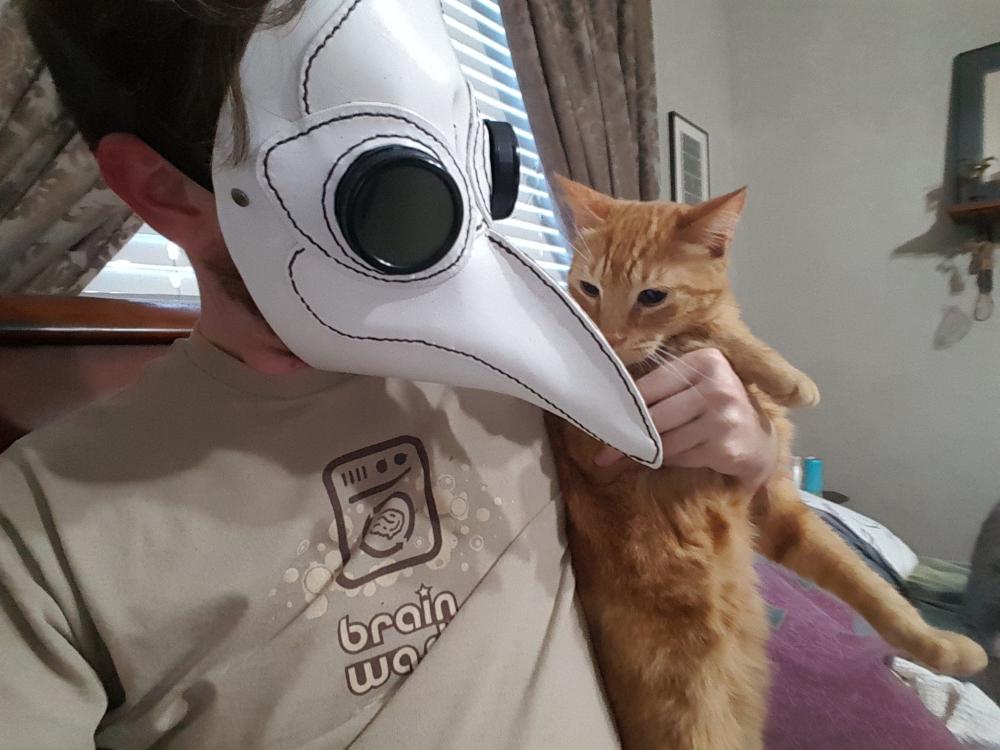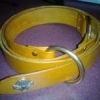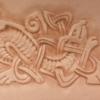Search the Community
Showing results for tags 'angelus'.
-
Hi everyone, I’m using Angelus 4-Coat with an airbrush (Craftool All-in-One airbrush) and I just can’t seem to get anything consistent. I think what’s happening is the 4-Coat is getting tacky in the nozzle. I did read I could use 2-Thin but I’m still getting the same type of consistency. Perhaps I’m adding too much of the coat?
- 5 replies
-
- how do i do that
- airbrush
- (and 7 more)
-
I have acquired 3 types of edge finish paints and decided to do a comparison of the three. I painted 3 edges of a piece of 7-8 oz unfinished veg tan using Fiebings Edge Kote, Angelus Acrylic Edge Paint and Giardini MaxMatte Edge Paint. I thinned the Giardini with about 20% water and the other two I used right out of the bottle. Picture 1: Picture 2 is the Fiebings Edge Kote. I applied two coats of each type paint using an edge roller, sanding lightly between coats with 400 grit wet/dry paper. Picture 3 is the Angelus paint: Picture 4 - Giardini paint: I let the paint dry overnight, then took a clean cotton cloth and vigorously rubbed each edge to see how much paint rubbed off. See results in pictures 5, 6 and 7: The Fiebings had the most paint come off on the cloth. I noticed that the Fiebings paint felt dull and slightly coarse, while the Angelus and Giardini both felt smoother and almost like plastic. Next I applied a coat of my leather dressing to each edge, allowed it to dry for a few minutes, then buffed with a clean cloth. The results are shown in the next 3 pictures: Fiebings Angelus Giardini I was surprised to see how much of the Angelus paint rubbed off, while the Fiebings and Giardini both had very little rub off. All three edges had a dull luster after buffing. In my opinion, the Giardini worked the best. It gave a durable, smooth finish and I liked the glossy look. I would not apply any type of finish over the panted edges. Next I would choose the Angelus paint, followed by Fiebings. The Giardini was the most cost effective at @$38 delivered for 1 liter (and it can be diluted with 20% water). It will probably last for many years at the rate I use it, assuming it doesn't gum up from age! I am interested in hearing from other leather workers who may or may not have had similar results using any of these paints. Hope some folks find this information to be useful!
- 27 replies
-
- edge paint
- angelus
-
(and 1 more)
Tagged with:
-
Hey y'all! I am an amateur leatherworker who has made a bit of a name for myself at local craft fairs and markets for vibrantly dyed leather goods (mostly collars, harnesses, and other items that don't need to be extremely flexible). So far I have achieved this using Fiebing's acrylic dye and an airbrush, but I am interested in branching out to use different products with a wider shade range. I am thinking of going with the Angelus acrylic leather paint but I often see the words "paint" and "dye" used interchangeably for acrylic products. Are these terms synonyms or are there substantial differences between a leather dye and a leather paint that I should be conscious of before trying to colour large strips of leather with the paint? Furthermore, is there any difference between an acrylic dye like Fiebings and a fluid acrylic pigment like those sold at craft stores? Thanks a bunch!
- 2 replies
-
- acrylic
- acrylic paint
-
(and 2 more)
Tagged with:
-
I make jewelry/accessories and am trying to optimize my process to make things more consistently etc. Starting with embossed veg tan leather. I currently am using mostly tandy black dye (I am not partial to it -- would be happy with anything affordable that I can buy in bulk). I then apply a sheen coat of a metallic angelus paint with a roller, so the black low areas show up nicely. Then I have been applying tandy ecoflo with a dauber but find it messes up the paint layer. I have read about this in other strings (thank you!) and am trying to resolve. Suggestions I read about include using an air brush, which I may consider in the future. (I already am playing with tests using a simple spray bottle for comparison and it does speed things up when I have a lot of small pieces). I also saw there was a debate between ecoflo, resolene, and a mop & glo suggestion (that I haven't yet jumped on). Specifically what I'm wondering is if I can just seal the DYE coat before I apply the paint, and then skip sealing the paint layer? Will the paint layer be safe and ok for use if it is unsealed? Angelus paints are acrylic but they sell their own acrylic sealer which they say prevents scratching. (Their target customers are mostly custom shoe painters, which is not what I'm doing, so I don't know if this issue is relevant for non-shoe products!) Anyone have experience with angelus sealers to know if they also dissolve acrylic paints? Thanks.
-
I'm trying out a couple of Angelus paints I got for Xmas. Here is a tool pot - really useful to get tidied up :-) I carved the flame design then just painted. It does the job anyway.
-
Last month we bought a hatchet to take down a tree in the back yard. Between the two of us, it only took about half an hour, with us alternating taking swings and watching our son splash in his pool. For being little, this is a really nice hatchet. (I'm not surprised; Fiskar's is a great brand; I've had a pair of their scissors since elementary school and they still work great.) Anyway, Fiskar's is usually really good about putting these nice hard plastic covers with toggle locks on their bigger axes, but for this one they just put on a cheap, softer plastic cover that feels like it will probably crack and be ruined after a while. This is a good tool that deserves better. So I made a proper leather cover for it, dyed it, carved and painted the leaf decoration, put a snap on to keep it shut, and tied it all together with two-loop Spanish edge lacing. For those who want to know, I used veggie tanned leather (I think 7-8oz.) from SLC, Eco-Flow Antique Gel (it's either Dark Brown or Briar Brown - sorry, it was a month ago and I can't remember for sure), Angelus paint for the leaf, and some finished lace I got from the dreaded Hobby Lobby. I probably got the snap from SLC. The pictures aren't great but my phone only takes selfies anymore so I make due.
-
I recently made a plague doctor mask in 3/4 vegtan and painted it with several coats of Angelus white paint. I see that Angelus makes its own finishers (I'm eyeing the satin), but was curious if folks have their own favorite to use? This is my first painted piece; I'm used to dyeing stuff. This is a costume piece that will be worn indoors, and mainly needs to be protected from convention wear-and-tear. It doesn't have to stay pristine, but I don't want it to get prematurely dinged up, either. Photo included, with bonus cat (his name is Dexter and he is my "assistant").
- 7 replies
-
- angelus
- leather paint
-
(and 1 more)
Tagged with:
-
Hello, I just finished stamping out all my pieces for this project and then proceeded to test paint some samples to see how to most effectively create the look I need to create. I tried the following methods with angelus leather paint in white and black. The look I'm trying to get is a black border with white stamped nordic runes. Methods used: (Black painted leather stamped) fine paint brush with white on brush. (too messy, not clean enough) Repeated the above one, then used a stiff black sponge brush with black paint and got the Orange text result in picture... I did this by accident and now that I look at it look the best... (Black painted leather stamped) watered down white paint and slowly added mix into groves in leather. (crappy turn out as shown in picture.) (Black painted leather stamped) painted grooves white and use clothe to remove. (caused rough feeling white residue on black and made it look like crap and couldn't get off the bad white paint and the letter wasn't fully filled either. I tried this again and the white just dries way too quick for this method to work correctly.) (White painted leather stamped) Used Block dyeing technique with black paint. (Got black paint in letters and the black didn't cover everything i wanted covered. :-/) The picture of my test sample is attached. The orange letters shown seems to look the best now... Is this the correct method? is there a easier way to get the rune letters white? I have a lot to do with this project with little time still, any advice would be appreciated.
-
Hi folks, I have a about every dye available to man for dying leather. Yes I do. A ton of stuff I will never use again. So I thought before I change the acrylic I am using I would ask some of you here what you like and why you like it in acrylic finishes. I make holsters mostly and need the features that most acrylics offer. I have used Fiebings then went to Eco Flo satin which I like but I noticed Angelus has a satin finish too. I usually buy in larger quantities so I wanted to see if any of you have used Angelus satin finish or have maybe found something you think is a better acrylic in a satin finish before I commit to something for the next 100 or so holsters. I have found that you need to work with something for a while to truly get the best from it. Please post what you like about any acrylic product, the features that you find most appealing, and let's face it life is a trade off most of the time so mention what could be better with the product as well. Your experiences would be very valuable to me and maybe some others.
-
From the album: Toolingaround
This is an eye patch I made for my brother for everyday wear (not a costume). He is visually impaired. I have been experimenting mixing Lexol non darkening neats foot oil with Angelus dye to achieve the soft shading. I am only beginning to try my hand at some braiding. It is my original design. Cheers, Toolingaround -
Hi everyone I thought I would share some results in light fastness of dyes and finishes. First let me say I was not making these test pieces to test light fastness but was testing for waterproof finishes with zero dye bleed on thin flexible veg tan. So far no luck on that one. When flexed all the finishes caused water spotting which often spotted the dye. So I ended up with all these tests cut from the same leather and thought heck lets hang em in the window and see what happens. Here is the result after about three weeks or so. I kept reading about resolene having UV protector in it well sorry folks I contacted Fiebings and there is no UV protector in resolene. That said although the difference is slight it was the most protective. However I was using it 50/50 with water and where the coverage was not completely even the sun faded and marked the dye. I hate using resolene and plan to order some angelus 600 to try at some point. I get a nicer more water resistant finish with folk art satin varnish but it is shiny and not UV protective either according to my test. So I tried ceramcoat matte varnish (interior /exterior) as it gives a nice finish but didn't pass the water test on thin leather when flexed and is it also does not have UV protection. Just like resolene, people on line say it has UV protector in it (Amazon sellers for example). So I contacted the manufactures and no it does not have added UV protection. I forgot to enquire about the folk art satin made by the same company. As an aside ceramcoat was my bullet proof go to varnish but it seems to me the formula has changed and I am out of my old supply :-( While all the dyes faded the areas with a finish of some sort had significantly less sun darkening of the leather under the dye thus there is obviously some UV protection but not enough to protect the fugitive dyes. Where there was just kiwi shoe polish or bees wax the leather sun darkened a lot. The red dye changed the least. I am planning to make a folding green man camp chair so I really need to solve this puzzle of both water protection, UV protection, dye bleed and flexibility. Some things I am going to try in the future (money and time withstanding) is angelus acrylic finish, silicon for shoes and car products to stop fading. Anyhow I will keep ya posted on the eventual results. Hope this is of some help to someone. Cheers, Toolingaround PS sorry for being so long winded




